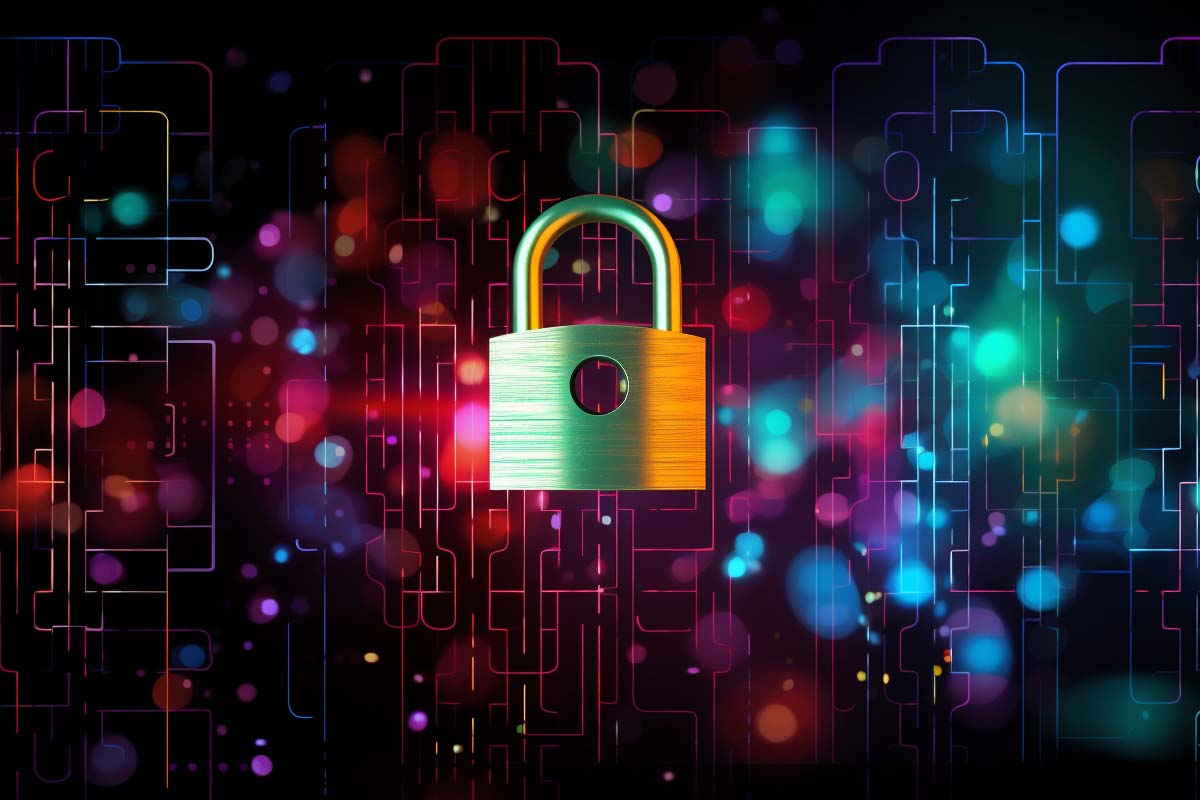What is Zoning Policy in IT Cloud Services?
Definition: Zoning Policy in IT Cloud Services A zoning policy in IT cloud services refers to a framework or set of rules that dictate how data, workloads, and resources are

In today’s rapidly evolving digital landscape, the significance of cybersecurity compliance cannot be overstated. As organizations increasingly rely on technology for every facet of their operations, the necessity to safeguard sensitive data against cyber threats becomes paramount. Cybersecurity compliance goes beyond adhering to regulatory requirements; it is a comprehensive strategy that fortifies an organization’s defenses against cyber threats such as DDoS attacks, phishing, malware, and ransomware.
At its core, cybersecurity compliance is about aligning with standards and regulations set by governing bodies or industry groups. This involves establishing robust controls to ensure the confidentiality, integrity, and availability (CIA) of information, whether it’s stored, processed, or in transit. However, with overlapping industry standards and requirements, achieving compliance can be a complex task for organizations.
Cybersecurity compliance is not just about risk management; it’s a strategic necessity. With cyber threats becoming increasingly sophisticated, no organization is immune to attacks. Compliance with cybersecurity standards is not just a legal requirement but also a crucial aspect of an organization’s success and operational smoothness. For small and medium-sized businesses (SMBs), this is particularly crucial as they often become targets for cybercriminals due to perceived vulnerabilities.
Data breaches can lead to complex, reputation-damaging scenarios and financial losses. Hence, compliance is an integral part of a robust cybersecurity framework, aiding in the protection against and mitigation of cyber threats.

Propel your career forward and be part of an essential member of any management team as an Information Security Manager. This advanced training series is designed specifically for those want to move up into a management position in the IT field.
Cybersecurity and data protection laws predominantly focus on sensitive data, encompassing personally identifiable information (PII), financial information, and protected health information (PHI). Compliance requirements may also extend to other types of sensitive data like IP addresses, email credentials, and biometric data.
Data Types and Compliance play a crucial role in cybersecurity, focusing on the protection of sensitive information from unauthorized access, disclosure, alteration, or destruction. Understanding these data types and their respective compliance requirements is essential for organizations to effectively safeguard their assets and maintain regulatory compliance. Here are the key data types along with their compliance considerations:
Understanding these data types and corresponding compliance requirements is pivotal for organizations to ensure they are handling data responsibly and protecting it from threats. Regular audits, employee training, and a robust data protection strategy are key to maintaining compliance and safeguarding sensitive information.
Proper cybersecurity compliance measures offer numerous benefits:
Starting a cybersecurity compliance program might seem daunting, but it can be structured into manageable steps:

An Information Security Analyst plays a pivotal role in safeguarding an organization’s digital infrastructure and sensitive data. This job involves a blend of technical expertise, vigilance, and continuous learning to protect against ever-evolving cyber threats.
Understanding and adhering to pertinent cybersecurity regulations is essential. Regulations like PCI DSS, HIPAA, SOC 2, NYDFS Cybersecurity Regulation, GDPR, FERPA, NIST, CCPA, and CMMC outline specific compliance requirements based on the industry and data handled. Staying informed about these regulations and how they apply to your organization is critical for maintaining compliance.
Understanding major cybersecurity regulations is essential for organizations to ensure they meet the required standards for protecting sensitive data and maintaining operational integrity. Here’s an overview of each major cybersecurity regulation:
These regulations vary in their specifics but are all integral to establishing and maintaining a secure and compliant operational environment. Organizations must stay informed and compliant with these regulations relevant to their industry and operations to protect their data and avoid legal and financial penalties.
A compliance assessment checklist is a valuable tool for ensuring that an organization meets the necessary regulatory standards. It’s advisable to utilize resources from credible bodies like the Payment Card Industry Security Standards Council (PCI SSC), the American Institute of CPAs (AICPA), and the National Institute of Standards and Technology (NIST) to create a comprehensive checklist.

If you’re looking to truly realize the full potenital of using Microsoft Power BI, ITU offers an excellent course designed to teach you all about using this exceptional reporting too.
In an era marked by escalating cyber threats and evolving data protection laws, prioritizing cybersecurity compliance is not just a legal obligation but a strategic imperative. Understanding the nuances of compliance and how it impacts your organization is the first step towards safeguarding your operations and maintaining the trust of your customers.
By fostering a culture of compliance and staying abreast of the latest regulations and best practices, organizations can not only mitigate risks but also position themselves for sustained growth and success in the digital age.
In an increasingly interconnected world, cybersecurity compliance is not merely an option but a cornerstone of corporate strategy, pivotal for safeguarding an organization’s assets, reputation, and customer trust. As we delve deeper, it’s clear that making cybersecurity compliance a priority equips an organization to navigate the digital landscape more securely and successfully.
Cultivating a culture of cybersecurity compliance within an organization goes beyond implementing policies and procedures; it involves ingraining a mindset of security awareness across all levels. Employees should be educated about the potential risks and the importance of compliance standards. Regular training sessions, workshops, and simulations of phishing or other cyberattack scenarios can keep the staff vigilant and prepared.
Integrating cybersecurity compliance into corporate culture is a multi-faceted process that involves strategic planning, education, and continuous engagement. It’s not just about enforcing rules but embedding a mindset of security awareness and responsibility throughout the organization. Here are the key steps to effectively integrate cybersecurity compliance into corporate culture:
By following these steps, organizations can integrate cybersecurity compliance into their corporate culture, ensuring that it becomes an integral part of the way they operate. This not only minimizes the risk of cyber incidents but also fosters a corporate environment that values and protects its data, reputation, and customer trust.
Technology plays a pivotal role in ensuring cybersecurity compliance. Advanced solutions like encryption, network firewalls, and intrusion detection systems can provide robust defenses against cyber threats. Moreover, technologies powered by artificial intelligence and machine learning can predict and mitigate potential breaches before they escalate into serious threats.
Leveraging technology for compliance is pivotal in protecting an organization’s data, reputation, and customer trust. Implementing advanced technological solutions can significantly bolster an organization’s cybersecurity posture. Here are ways in which technology can be leveraged for compliance:
By integrating these technological solutions, organizations can significantly enhance their ability to protect data, maintain a solid reputation, and earn and retain customer trust. It’s essential, however, to ensure that these technologies are properly implemented, regularly updated, and part of a broader, cohesive cybersecurity strategy.
Cybersecurity is not a one-time fix but a continuous process of improvement. Regular audits, monitoring, and updating of security policies and practices are essential to stay ahead of emerging threats. Organizations should not only comply with current standards but also anticipate future regulations and prepare accordingly.
Given the complexity and ever-evolving nature of cybersecurity threats and regulations, partnering with cybersecurity experts can provide valuable insights and guidance. These experts can assist in risk assessments, compliance audits, and the formulation of a strategic response to potential cyber incidents.
Even with stringent compliance measures in place, the possibility of a breach cannot be entirely eliminated. Organizations must have an incident response plan ready to address any breaches promptly and efficiently. This plan should include steps for containing the breach, assessing the damage, notifying affected parties, and taking corrective actions to prevent future incidents.

Embarking on the Pentester Career Path is a journey into the intricate and dynamic world of cybersecurity. This series is designed to equip aspiring professionals with the skills and knowledge essential for excelling in the field of penetration testing.
In conclusion, cybersecurity compliance is a multifaceted and dynamic challenge that requires a proactive and comprehensive approach. By understanding the intricacies of cybersecurity compliance, integrating it into the corporate culture, leveraging technology, engaging with experts, and preparing for potential incidents, organizations can fortify their defenses against the myriad of cyber threats.
As the digital realm continues to expand and evolve, the importance of cybersecurity compliance will only grow. Organizations that prioritize and continuously refine their cybersecurity compliance strategies will not only protect themselves against immediate threats but also establish a foundation for long-term resilience and success in the digital future.
Cybersecurity compliance involves adhering to laws, regulations, and guidelines designed to protect sensitive data and information systems from threats and vulnerabilities. It’s crucial because it not only helps in protecting an organization from data breaches and cyber-attacks but also ensures that the organization is following legal and ethical standards, thereby preserving its reputation and maintaining customer trust.
Cybersecurity compliance refers to meeting specific standards and regulations set by governing bodies or industry organizations, often focusing on the protection and privacy of data. Cybersecurity, on the other hand, encompasses a broader range of activities and technologies aimed at protecting networks, devices, programs, and data from attack, damage, or unauthorized access. Compliance is about meeting specific criteria, while security is about protecting assets.
Non-compliance can lead to severe consequences including hefty fines, legal actions, damage to the organization’s reputation, loss of customer trust, and in some cases, even business closure. Additionally, non-compliance can make an organization more vulnerable to cyber-attacks, resulting in potential data breaches and loss of sensitive information.
Staying updated requires a proactive approach, including subscribing to updates from regulatory bodies, engaging in industry forums, attending relevant cybersecurity conferences, and consulting with legal and cybersecurity experts. Additionally, implementing a robust compliance management system can help track changes in regulations and ensure that the organization adapts its policies and procedures accordingly.
SMEs should first identify the specific regulations applicable to their industry and type of data they handle. The next steps include conducting a risk assessment, developing a comprehensive cybersecurity policy, training employees, implementing necessary security measures (like firewalls, encryption, and access controls), and regularly reviewing and updating their security practices. It’s also advisable for SMEs to consult with cybersecurity experts to ensure that their compliance measures are robust and up-to-date.
Lorem ipsum dolor sit amet, consectetur adipiscing elit. Ut elit tellus, luctus nec ullamcorper mattis, pulvinar dapibus leo.
$49.99 Original price was: $49.99.$16.99Current price is: $16.99. / month with a 10-day free trial
Definition: Zoning Policy in IT Cloud Services A zoning policy in IT cloud services refers to a framework or set of rules that dictate how data, workloads, and resources are
Definition: Backbone Network Architecture Backbone Network Architecture refers to the framework that connects various subnetworks, local area networks (LANs), or wide area networks (WANs) within an enterprise or service provider’s
Definition: Fault Tolerance Techniques Fault tolerance techniques are strategies and methodologies designed to ensure the continuous operation of a system, even in the presence of faults or failures. These techniques
Definition: Subsurface Scattering Subsurface scattering (SSS) is a phenomenon in which light penetrates the surface of a translucent object, scatters inside the material, and exits at a different point. This
Definition: Fragmentation Fragmentation is a condition in computer memory or storage where free space is broken into smaller, non-contiguous blocks, leading to inefficient use of resources and reduced system performance.
Definition: Data Normalization Data normalization is the process of organizing and structuring a database to minimize data redundancy and dependency by dividing large tables into smaller, related tables. It follows
Definition: Port Scanning and Fingerprinting Port Scanning and Fingerprinting are cybersecurity techniques used to identify open ports, services, and operating systems on a target system. Port scanning involves probing a
Definition: XSS Credential Theft XSS Credential Theft refers to the process of stealing user login credentials through Cross-Site Scripting (XSS) attacks. In these attacks, a malicious actor injects malicious JavaScript
Definition: AWS Redshift AWS Redshift is a fully managed, petabyte-scale cloud data warehouse service provided by Amazon Web Services (AWS). It enables businesses to efficiently store, process, and analyze large
Definition: Full-Stack Developer A Full-Stack Developer is a software engineer skilled in both front-end and back-end development. They have expertise in multiple technologies, including HTML, CSS, JavaScript, databases, server-side programming
Definition: Digital Forensics Digital Forensics is the process of identifying, collecting, analyzing, and preserving digital evidence to investigate cybercrimes, security incidents, and legal cases. It is a branch of forensic
Definition: Off-Page SEO Off-Page SEO refers to all the activities performed outside a website to improve its search engine rankings. It involves strategies such as link building, social media marketing,
ENDING THIS WEEKEND: Train for LIFE at our lowest price. Buy once and never have to pay for IT Training Again.